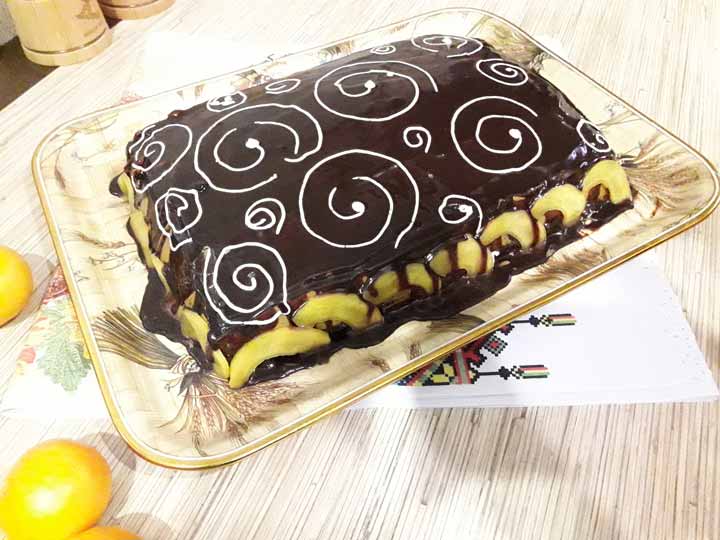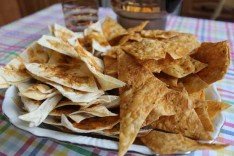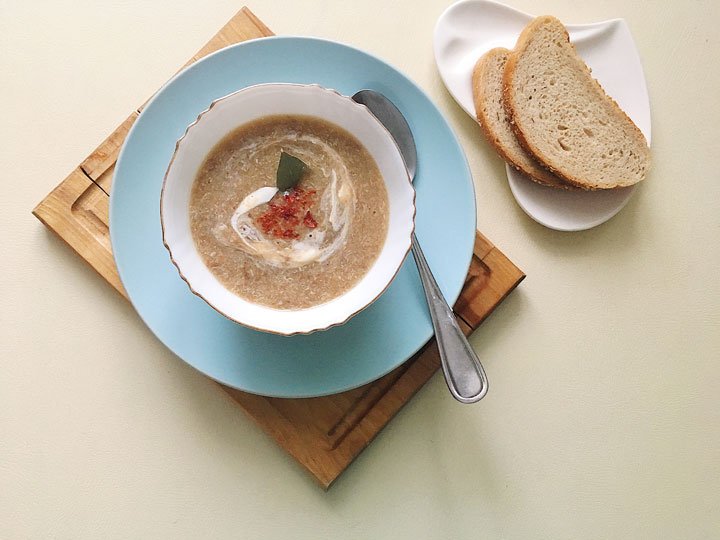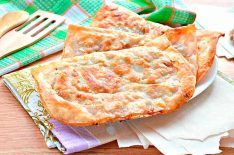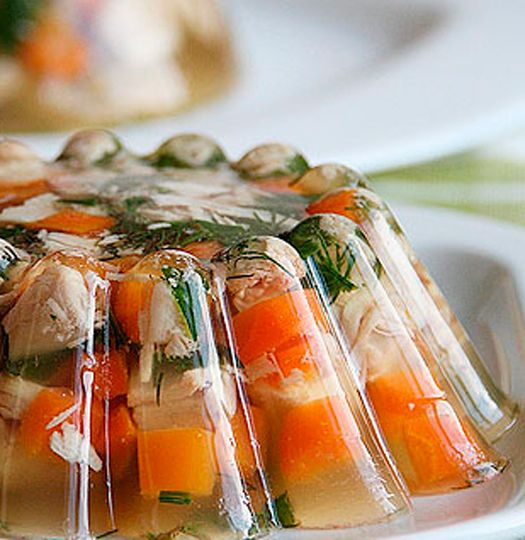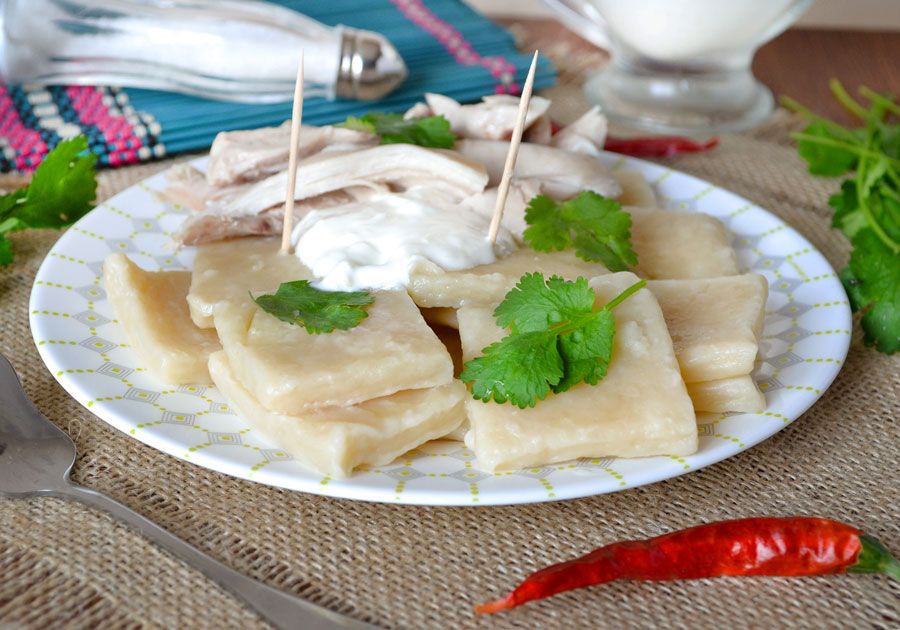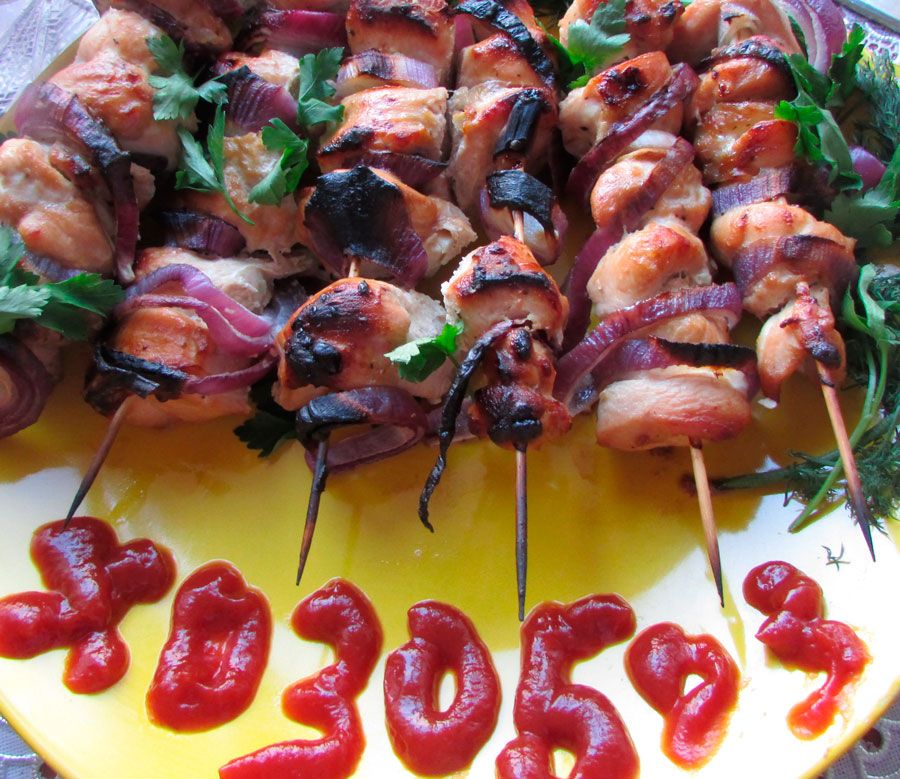Bread sticks
- Nutrition Facts
- Calories: 429
- Protein: 12
- Fats: 10
- Carbohydrates: 70
- Information
- Time: 1 hour 30 mins
- By: Julia
- Ratings 5
- Your ratings:

Bread sticks with poppy seeds and flax seeds are ideal for serving with soups or borscht, with the most exquisite appetizers and salads, meat and fish delicacies. An excellent alternative to poppy seeds and flaxseeds is sesame - it is very often used for bread products. Breadsticks, the recipe of which is outlined below, can be made from store-bought yeast dough or cooked at home. When the dough remains from the preparation of yeast baking, it will not be difficult to dispose of the excess by preparing “crunchies”. And if there is a little cheese, then you will get excellent bread cheese sticks.
Although the list of products is quite simple, it is better to know the composition right away so that the planned event does not suddenly fail.
History of the dish
Crunchy Italian bread sticks come from the Italian region of Piedmont. As the story goes, the first king of Italy, Victor Emmanuel II, back in the 19th century, ordered his baker to bake light bread for his son - he suffered from indigestion. And so it happened that grissini breadsticks were served on the royal table. In the future, other bakers began to copy the idea, as well as compete in the originality of bread products - give them various shapes, sprinkle with spices, herbs, seeds, and make them of different lengths.
Almost every dining Italian table has bread sticks. According to another version, in the same Italy, bread was sold in loaves, but due to the crisis, the loaves “lost weight” all the time, decreased and eventually turned into bread sticks. In other words, it is difficult to say that the Italians suffered greatly from this, because their culinary box received a valuable bonus.
List of ingredients:
- 1.2 tsp dry yeast (no slide),
- 3 g sugar
- 1 g salt
- 240 g wheat flour,
- 35 ml vegetable oil,
- 60 ml of water
- 50 g flax seeds,
- 25 g poppy seeds,
- 5 g butter.
Cooking
- Pour slightly warmed water into a bowl (no more than 40 degrees). If the water is hot, then the yeast will be hopelessly spoiled, that is, the dough will not be able to come up. Pour dry "quick" yeast, salt and granulated sugar into a bowl, stir. Before adding yeast, look at the date of their manufacture. The product must be fresh.

Pour slightly warmed water into a bowl (no more than 40 degrees). If the water is hot, then the yeast will be hopelessly spoiled, that is, the dough will not be able to come up. Pour dry "quick" yeast, salt and granulated sugar into a bowl, stir. Before adding yeast, look at the date of their manufacture. The product must be fresh.
- Add the wheat flour sifted through a sieve and stir with a whisk. Sifting makes it possible to get rid of possible foreign impurities in the flour, and also saturates it with oxygen. Cover the bowl with a damp towel and let the dough rise for 15 minutes in a warm place. You can put it in the oven, which is preheated slightly.

Add the wheat flour sifted through a sieve and stir with a whisk. Sifting makes it possible to get rid of possible foreign impurities in the flour, and also saturates it with oxygen. Cover the bowl with a damp towel and let the dough rise for 15 minutes in a warm place. You can put it in the oven, which is preheated slightly.
- Little by little we begin to add the remaining flour, pour in vegetable oil - there are also requirements for this product. Oil should not have a pronounced smell and taste, otherwise bread sticks with sesame seeds will acquire this taste. Stir first with a wooden or regular spoon, and then with your hands.

Little by little we begin to add the remaining flour, pour in vegetable oil - there are also requirements for this product. Oil should not have a pronounced smell and taste, otherwise bread sticks with sesame seeds will acquire this taste. Stir first with a wooden or regular spoon, and then with your hands.
- Knead a soft elastic dough. Let it rise for 50 minutes or a little longer - the dough should almost double in size. To release the carbon dioxide formed due to the yeast, punch down the dough.

Knead a soft elastic dough. Let it rise for 50 minutes or a little longer - the dough should almost double in size. To release the carbon dioxide formed due to the yeast, punch down the dough.
- Divide the entire volume of dough into a pair of identical-sized parts, roll it into a large layer with a rolling pin or hands, sprinkle with seeds. If you want to make bread sticks salty, sprinkle with crystals. Press all the additives into the dough. With dried herbs, the main thing is not to overdo it. For example, an excess of rosemary will give a noticeable bitterness.

Divide the entire volume of dough into a pair of identical-sized parts, roll it into a large layer with a rolling pin or hands, sprinkle with seeds. If you want to make bread sticks salty, sprinkle with crystals. Press all the additives into the dough. With dried herbs, the main thing is not to overdo it. For example, an excess of rosemary will give a noticeable bitterness.
- Wrap the edge of the dough to the middle, sprinkle with seeds again, then wrap the second edge, sprinkle it too. It becomes clear that the recipe for grissini breadsticks is quite simple, even a novice cook can handle it. Such an interesting activity is an excellent occasion to involve all family members, especially the youngest ones. The kids will be delighted with their direct participation in the preparation of a delicious snack.

Wrap the edge of the dough to the middle, sprinkle with seeds again, then wrap the second edge, sprinkle it too. It becomes clear that the recipe for grissini breadsticks is quite simple, even a novice cook can handle it. Such an interesting activity is an excellent occasion to involve all family members, especially the youngest ones. The kids will be delighted with their direct participation in the preparation of a delicious snack.
- Cut the dough crosswise into thin strips. If the dough sticks to the knife or work surface, simply dust it with flour. Some hostesses use such a trick - they lubricate the work surface and hands with vegetable oil, the main thing is to use quite a bit.

Cut the dough crosswise into thin strips. If the dough sticks to the knife or work surface, simply dust it with flour. Some hostesses use such a trick - they lubricate the work surface and hands with vegetable oil, the main thing is to use quite a bit.
- Take each piece of dough and, gradually twisting, stretch in different directions. Too much force is not needed, as the flagellum can be torn. At the same time, you don’t need to make the blanks very thick, otherwise the whole Italian “charm” will disappear - the products will turn out to be hard and rough.

Take each piece of dough and, gradually twisting, stretch in different directions. Too much force is not needed, as the flagellum can be torn. At the same time, you don’t need to make the blanks very thick, otherwise the whole Italian “charm” will disappear - the products will turn out to be hard and rough.
- We cover the baking sheet with a silicone mat or baking paper, grease it with any fat - if there is, then use a silicone brush. We lay out the future "crunches" almost closely and set the temperature regime to 190-200 degrees, we expect 10-12 minutes. Grissini sticks will "grow up" a little and brown. Cool and you can taste. In addition to the classic recipe, you can also cook bread sticks with cheese. Rye breadsticks are ideal as an addition to a vegetable salad. Enjoy your meal!

We cover the baking sheet with a silicone mat or baking paper, grease it with any fat - if there is, then use a silicone brush. We lay out the future "crunches" almost closely and set the temperature regime to 190-200 degrees, we expect 10-12 minutes. Grissini sticks will "grow up" a little and brown. Cool and you can taste. In addition to the classic recipe, you can also cook bread sticks with cheese. Rye breadsticks are ideal as an addition to a vegetable salad. Enjoy your meal!
Benefits of bread sticks
Compared to ordinary bread, such sticks occupy a more advantageous position, since they are much drier and soaked in saliva and gastric juice much more easily. Sticks are absorbed better this way. The benefits of sticks will be even higher if you prefer a product with additives in the form of dried herbs, seeds, flax seeds and sesame seeds. In principle, there can be no harm from such sticks, except that if you abuse them too much, you can gain a little extra weight.




